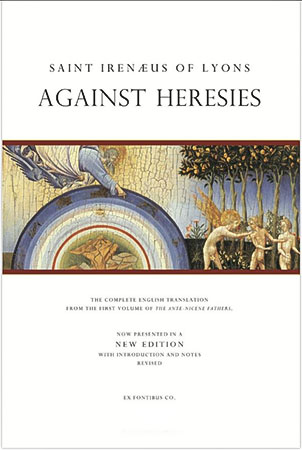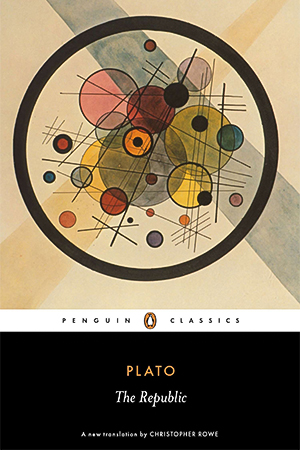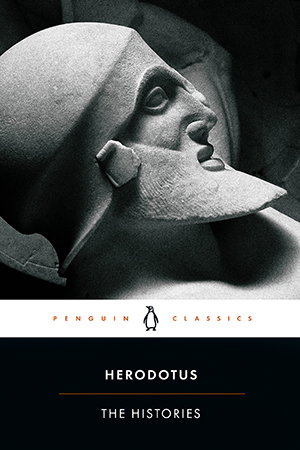 Title: Systematic Theology: The Complete Three VolumesSeries: EvangelicalPublished by:
Title: Systematic Theology: The Complete Three VolumesSeries: EvangelicalPublished by: Scribner, Armstrong, and Company
Release Date: Volume I - III (1872 - 1873)
Contributors: CHARLES HODGE, D. D., (Author)
Genre: TheologyPages: 2055
CONTENTS
VOLUME I 1872
INTRODUCTION
CHAPTER I
ON METHOD
§ 1. Theology a Science
§ 2. Theological Method
§ 3. The Speculative Method
§ 4. The Mystical Method
§ 5. The Inductive Method
§ 6. The Scriptures contain all the Facts of Theology
CHAPTER II
THEOLOGY
§ 1. Its Nature
§ 2. Facts of Nature reveal God
§ 3. Insufficiency of Natural Theology
§ 4. Christian Theology
CHAPTER III
RATIONALISM
§ 1. Meaning and Usage of the Word
§ 2. Deistical Rationalism
§ 3. Second Form of Rationalism.—Its Nature, Refutation, History
§ 4. Dogmatism
§ 5. Proper Office of Reason in Matters of Religion
§ 6. Relation of Philosophy and Revelation
§ 7. Office of the Senses in Matters of Faith
CHAPTER IV
MYSTICISM
§ 1. Meaning of the Word
§ 2. Mysticism in the Early Church
§ 3. Mysticism during the Middle Ages
§ 4. Mysticism at and after the Reformation
§ 5. Quietism
§ 6. The Quakers or Friends
§ 7. Objections to the Mystical Theory
CHAPTER V
ROMAN CATHOLIC DOCTRINE CONCERNING THE RULE OF FAITH
§ 1. Statement of the Doctrine
§ 2. Roman Catholic Doctrine concerning the Scriptures
§ 3. Tradition
§ 4. The Office of the Church as a Teacher
§ 5. Examination of the Romish Doctrine
§ 6. Examination of the Doctrine of the Church of Rome on Tradition
§ 7. Office of the Church as a Teacher
CHAPTER VI
THE PROTESTANT RULE OF FAITH
§ 1. The Statement of the Doctrine
§ 2. The Scriptures given by Inspiration of God
§ 3. Adverse Theories
§ 4. Completeness of Scripture
§ 5. Perspicuity of Scripture.—Right of Private Judgment
§ 6. Rules of Interpretation
PART I
THEOLOGY PROPER
CHAPTER I
ORIGIN OF THE IDEA OF GOD
§ 1. Knowledge of God as Innate
§ 2. The Knowledge of God is not due to a Process of Reasoning
§ 3. The Knowledge of God is not due exclusively to Tradition
§ 4. Can the Existence of God be proved?
CHAPTER II
THEISM
§ 1. Ontological Argument.—As presented by Anselm.—By Des Cartes.—By Dr. Samuel Clarke.—By Cousin
§ 2. Cosmological Argument
§ 3. Teleological Argument
§ 4. Objections to the Teleological Argument
§ 5. The Moral or Anthropological Argument
CHAPTER III
ANTI-THEISTIC THEORIES
§ 1. What is Meant by Anti-Theism.—Atheism
§ 2. Polytheism
§ 3. Hylozoism
§ 4. Materialism
§ 5. Pantheism.—Its three Principal Forms
CHAPTER IV
KNOWLEDGE OF GOD
§ 1. Can God be known?
§ 2. God cannot be fully known
§ 3. Sir William Hamilton’s Doctrine
CHAPTER V
THE NATURE AND ATTRIBUTES OF GOD
§ 1. Definitions of God
§ 2. Divine Attributes
§ 3. Classification of the Divine Attributes
§ 4. Spirituality of God
§ 5. Infinity
§ 6. Eternity
§ 7. Immutability
§ 8. Knowledge
§ 9. The Will of God
§ 10. The Power of God
§ 11. Holiness of God
§ 12. Justice
§ 13. The Goodness of God
§ 14. The Truth of God
§ 15. Sovereignty of God
CHAPTER VI
THE TRINITY
§ 1. Preliminary Remarks
§ 2. Biblical Form of the Doctrine
§ 3. The Transition Period
§ 4. The Church Doctrine as presented by the Council of Nice
§ 5. Points decided by the Councils of Nice and Constantinople
§ 6. Examination of the Nicene Doctrine
§ 7. Philosophical Forms of the Doctrine of the Trinity
CHAPTER VII
THE DIVINITY OF CHRIST
§ 1. Testimony of the Old Testament
§ 2. The General Characteristics of the New Testament Teaching concerning Christ
§ 3. Particular Passages in the New Testament which teach the Divinity of Christ
CHAPTER VIII
THE HOLY SPIRIT
§ 1. His Nature
§ 2. Office of the Holy Spirit
§ 3. History of the Doctrine concerning the Holy Spirit
CHAPTER IX
THE DECREES OF GOD
§ 1. The Nature of the Divine Decrees
§ 2. Objections to the Doctrine of Divine Decrees
CHAPTER X
CREATION
§ 1. Different Theories concerning the Origin of the Universe
§ 2. Mediate and Immediate Creation
§ 3. Proof of the Doctrine of a Creation ex nihilo
§ 4. Objections to the Doctrine of a Creation ex nihilo
§ 5. Design of the Creation
§ 6. The Mosaic Account of the Creation
CHAPTER XI
PROVIDENCE
§ 1. Preservation
§ 2. Government
§ 3. Different Theories of the Divine Government
§ 4. The Principles involved in the Scriptural Doctrine of Providence
CHAPTER XII
MIRACLES
§ 1. Usage of the Word
§ 2. Possibility of Miracles
§ 3. Can a Miracle be known as such?
§ 4. The Value of Miracles as a Proof of Divine Revelation
CHAPTER XIII
ANGELS
§ 1. Their Nature
§ 2. Their State
§ 3. Their Employments
§ 4. Evil Angels
VOLUME II 1872
ANTROPOLOGY
CHAPTER I
ORIGIN OF MAN
§ 1. Scriptural Doctrine
§ 2. Anti-Scriptural Theories
§ 3. Antiquity of Man
CHAPTER II
NATURE OF MAN
§ 1. Scriptural Doctrine
§ 2. Trichotomy
§ 3. Realism
§ 4. Another Form of the Realistic Theory
CHAPTER III
ORIGIN OF THE SOUL
§ 1. Theory of Preëxistence
§ 2. Traducianism
§ 3. Creationism
§ 4. Concluding Remarks
CHAPTER IV
UNITY OF THE HUMAN RACE
§ 1. Idea of Species
§ 2. Evidences of the Identity of Species
§ 3. Application of these Criteria to Man
§ 4. Philological and Moral Argument
CHAPTER V
ORIGINAL STATE OF MAN
§ 1. Scriptural Doctrine
§ 2. Man created in the Image of God
§ 3. Original Righteousness
§ 4. Dominion over the Creatures
§ 5. Doctrine of Romanists
§ 6. Pelagian and Rationalistic Doctrine
CHAPTER VI
COVENANT OF WORKS
§ 1. God made a Covenant with Adam
§ 2. The Promise
§ 3. The Condition
§ 4. The Penalty
§ 5. The Parties
§ 6. The Perpetuity of the Covenant
CHAPTER VII
THE FALL
Scriptural Account.—The Tree of Life.—The Tree of Knowledge.—The Serpent.—The Temptation.—Effects of the First Sin
CHAPTER VIII
SIN
§ 1. Nature of the Question
§ 2. Philosophical Theories
§ 3. Doctrine of the Early Church
§ 4. Pelagian Theory
§ 5. Augustine’s Doctrine
§ 6. Doctrine of the Church of Rome
§ 7. Protestant Doctrine of Sin
§ 8. Effects of Adam’s Sin on his Posterity
§ 9. Immediate Imputation
§ 10. Mediate Imputation
§ 11. Preëxistence
§ 12. Realistic Theory
§ 13. Original Sin
§ 14. Seat of Original Sin
§ 15. Inability
CHAPTER IX
FREE AGENCY
§ 1. Different Theories of the Will
§ 2. Definition of Terms
§ 3. Certainty consistent with Liberty
PART III
SOTERIOLOGY
CHAPTER I
PLAN OF SALVATION
§ 1. God has such a Plan
§ 2. Supralapsarianism
§ 3. Infralapsarianism
§ 4. Hypothetical Redemption
§ 5. The Lutheran Doctrine as to the Plan of Salvation
§ 6. The Remonstrant Doctrine
§ 7. The Wesleyan Doctrine
§ 8. The Augustinian Doctrine
§ 9. Objections to the Augustinian Doctrine
CHAPTER II
COVENANT OF GRACE
§ 1. The Plan of Salvation is a Covenant
§ 2. Different Views of the Nature of that Covenant
§ 3. Parties to the Covenant
§ 4. Covenant of Redemption
§ 5. Covenant of Grace
§ 6. Identity of the Covenant under all Dispensations
§ 7. Different Dispensations
CHAPTER III
THE PERSON OF CHRIST
§ 1. Preliminary Remarks
§ 2. Scriptural Facts concerning the Person of Christ
§ 3. The Hypostatical Union
§ 4. Consequences of the Hypostatical Union
§ 5. Erroneous Doctrines on the Person of Christ.—Ebionites.—Gnostics.—Apollinarian Doctrine.—Nestorianism.—
§ 6. Doctrine of the Reformed Churches
§ 7. Lutheran Doctrine
§ 8. Later Forms of the Doctrine
§ 9. Modern Forms of the Doctrine
CHAPTER IV
THE MEDIATORIAL WORK OF CHRIST
§ 1. Christ the only Mediator
§ 2. Qualifications for the Work
§ 3. Threefold Office of Christ
CHAPTER V
PROPHETIC OFFICE
§ 1. Its Nature
§ 2. How Christ executes the Office of a Prophet
CHAPTER VI
PRIESTLY OFFICE
§ 1. Christ is truly a Priest
§ 2. Christ is our only Priest
§ 3. Definition of Terms
CHAPTER VII
SATISFACTION OF CHRIST
§ 1. Statement of the Doctrine
§ 2. The Sense in which the Work of Christ was a Satisfaction
§ 3. The Doctrine of the Scotists and Remonstrants
§ 4. Christ’s Satisfaction rendered to Justice
§ 5. Christ’s Work a Satisfaction to Law
§ 6. Proof of the Doctrine as above stated
§ 7. Objections
CHAPTER VIII
FOR WHOM DID CHRIST DIE?
§ 1. State of the Question
§ 2. Proof of the Augustinian Doctrine
CHAPTER IX
THEORIES OF THE ATONEMENT
§ 1. The Orthodox View
§ 2. Doctrine of some of the Early Fathers
§ 3. Moral Theory
§ 4. Governmental Theory
§ 5. Mystical Theory
§ 6. Concluding Remarks
CHAPTER X
INTERCESSION OF CHRIST
§ 1. Christ our Intercessor
§ 2. Nature of his Intercession
§ 3. Its Objects
§ 4. The Intercession of Saints
CHAPTER XI
KINGLY OFFICE OF CHRIST
§ 1. The Church the Kingdom of God
§ 2. Christ truly a King
§ 3. Nature of the Kingdom of Christ
§ 4. The Kingdom of Glory
CHAPTER XII
THE HUMILIATION OF CHRIST
§ 1. Includes his Incarnation
§ 2. His Being made under the Law
§ 3. His Sufferings and Death
§ 4. His Enduring the Wrath of God
§ 5. His Death and Burial
CHAPTER XIII
THE EXALTATION OF CHRIST
§ 1. His Resurrection
§ 2. His Ascension
§ 3. His Session at the Right Hand of God
CHAPTER XIV
VOCATION
§ 1. Scriptural Usage of the Word
§ 2. External Call
§ 3. Common Grace
§ 4. Efficacious Grace
§ 5. Proof of the Doctrine
§ 6. Objections
§ 7. History of the Doctrine of Grace
VOLUME III 1873
PART III
CHAPTER XV
REGENERATION
§ 1. Usage of the word Regeneration
§ 2. Nature of Regeneration
§ 3. The Evangelical Doctrine
§ 4. Objections to the Evangelical Doctrine
CHAPTER XVI
FAITH
§ 1. Preliminary Remarks
§ 2. Psychological Nature of Faith
§ 3. Different Kinds of Faith
§ 4. Relation of Faith and Knowledge
§ 5. Relation of Faith and Feeling
§ 6. Relation of Faith and Love
§ 7. Object of Saving Faith
§ 8. Effects of Faith
CHAPTER XVII
JUSTIFICATION
§ 1. Symbolical Statement of the Doctrine
§ 2. Justification a forensic Act
§ 3. Works not the Ground of Justification
§ 4. The Righteousness of Christ the Ground of Justification
§ 5. Imputation of Righteousness
§ 6. Proof of the Doctrine of Imputation
§ 7. Consequences of the Imputation of Christ’s Righteousness
§ 8. Relation of Faith to Justification
§ 9. Objections to the Protestant Doctrine of Justification
§ 10. Departures from the Protestant Doctrine
§ 11. Modern Views on Justification
CHAPTER XVIII
SANCTIFICATION
§ 1. Its Nature
§ 2. Wherein it consists
§ 3. Method of
§ 4. Fruits of
§ 5. Necessity of Good Works
§ 6. Relation of Good Works to Reward
§ 7. Perfectionism
§ 8. Theories of Perfectionism
CHAPTER XIX
THE LAW
§ 1. Preliminary Principles
§ 2. Division of the Contents of the Decalogue
§ 3. The Preface to the Ten Commandments
§ 4. The First Commandment
§ 5. Invocation of Saints
§ 6. The Second Commandment
§ 7. The Third Commandment
§ 8. The Fourth Commandment
§ 9. The Fifth Commandment.—Its Design
§ 10. The Sixth Commandment.—Its Design
§ 11. The Seventh Commandment
§ 12. The Eighth Commandment
§ 13. The Ninth Commandment
§ 14. The Tenth Commandment
CHAPTER XX
THE MEANS OF GRACE
§ 1. The Word of God
§ 2. The Sacraments
§ 3. Number of the Sacraments
§ 4. Efficacy of the Sacraments
§ 5. The Necessity of the Sacraments
§ 6. The Validity of the Sacraments
§ 7. Baptism
§ 8. The Formula of Baptism
§ 9. The Subjects of Baptism.—Qualifications for Adult Baptism
§ 10. Infant Baptism
§ 11. Whose Children are entitled to Baptism?
§ 12. Efficacy of Baptism
§ 13. Lutheran Doctrine of Baptism
§ 14. Doctrine of the Church of Rome
§ 15. The Lord’s Supper
§ 16. Doctrine of the Reformed Churches
§ 17. Modern Views on this Sacrament
§ 18. The Lutheran Doctrine
§ 19. Doctrine of the Church of Rome
§ 20. Prayer
PART IV
ESCHATOLOGY
CHAPTER I
STATE OF THE SOUL AFTER DEATH
§ 1. Protestant Doctrine
§ 2. Sleep of the Soul
§ 3. Patristic Doctrine of the Intermediate State
§ 4. Doctrine of the Church of Rome
CHAPTER II
RESURRECTION
§ 1. Scriptural Doctrine
§ 2. History of the Doctrine
CHAPTER III
SECOND ADVENT
§ 1. Preliminary Remarks
§ 2. The Church Doctrine
§ 3. Personal Advent of Christ
§ 4. Calling of the Gentiles
§ 5. Conversion of the Jews
§ 6. Antichrist
CHAPTER IV
CONCOMITANTS OF THE SECOND ADVENT
§ 1. The General Resurrection
§ 2. The Final Judgment
§ 3. The End of the World
§ 4. The Kingdom of Heaven
§ 5. Theory of the Premillennial Advent
§ 6. Future Punishment























